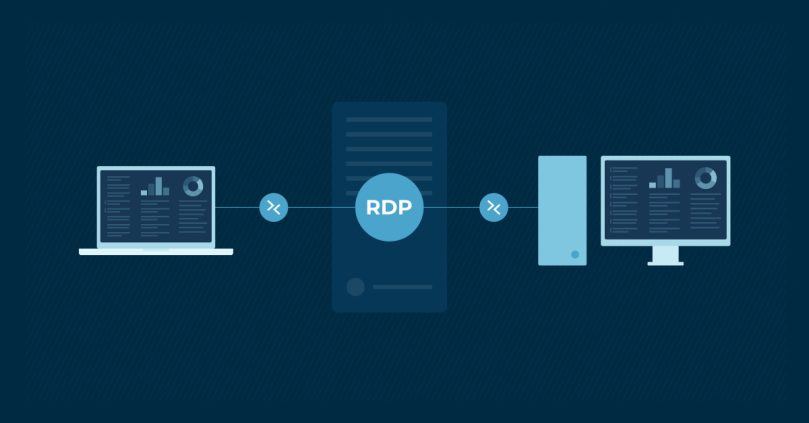
Table of Contents
RDP (Remote Desktop Protocol) is a proprietary protocol developed by Microsoft that allows users to remotely connect to and control another computer over a network. RDP enables users to access the desktop environment of a Windows computer from another device, providing full control as if they were physically sitting in front of the remote computer.
Key Features of Remote Desktop Protocol
- Remote Access:
- RDP allows users to access and control a remote Windows computer from anywhere with an internet connection.
- Graphical User Interface (GUI):
- The remote desktop session provides a full graphical interface, allowing users to interact with the desktop, run applications, manage files, and perform administrative tasks.
- Security:
- RDP supports encryption to protect the data transmitted between the client and the server. It also supports multi-factor authentication and Network Level Authentication (NLA) to enhance security.
- File and Printer Sharing:
- RDP allows users to share local files and printers with the remote computer, enabling file transfers and remote printing during the session.
- Session Persistence:
- Remote Desktop Protocol sessions can be disconnected and reconnected without losing the session state, allowing users to resume their work exactly where they left off.
- Multiple Monitor Support:
- RDP supports multiple monitors, allowing users to extend their remote desktop session across multiple screens.
Common Uses of RDP
- Remote Work:
- RDP is widely used by individuals and organizations to enable remote work. Employees can access their office computers from home or while traveling, ensuring they have access to necessary resources.
- System Administration:
- IT administrators use RDP to manage and troubleshoot remote servers and workstations. It allows them to perform maintenance tasks, install software, and configure systems without being physically present.
- Virtual Private Servers (VPS):
- RDP is commonly used to access and manage Windows-based Virtual Private Servers (VPS), providing users with a remote desktop environment on a server.
- Helpdesk Support:
- Helpdesk technicians use RDP to remotely assist users with technical issues, providing real-time support by taking control of the user’s desktop.
- Accessing Personal Computers:
- Individuals use RDP to access their home computers while they are away, allowing them to retrieve files, run applications, or monitor their systems.
How RDP Works
- RDP Server:
- The computer or server that is being accessed remotely runs the RDP server software (Remote Desktop Services in Windows). This server listens for incoming connections on TCP port 3389 (default) and provides the desktop environment to the remote client.
- RDP Client:
- The device used to access the remote computer runs the RDP client software. This client establishes a connection to the RDP server and displays the remote desktop on the client device. The client software is available on Windows (Remote Desktop Connection), macOS, Linux, and mobile platforms like iOS and Android.
- Connection Process:
- The user launches the RDP client, enters the IP address or hostname of the remote computer, and logs in with their credentials. The RDP server then sends the desktop environment to the client, allowing the user to interact with the remote system.
Security Considerations
- Encryption:
- RDP sessions are encrypted to prevent eavesdropping and unauthorized access. It’s important to ensure that RDP connections use strong encryption methods.
- Firewall Configuration:
- The RDP port (TCP 3389) should be carefully managed to prevent unauthorized access. Many organizations restrict RDP access through firewalls or use Virtual Private Networks (VPNs) to secure connections.
- Brute-Force Attacks:
- RDP servers are often targeted by brute-force attacks. To mitigate this risk, strong passwords, account lockout policies, and multi-factor authentication should be used.
- Update and Patch Management:
- Regularly update and patch the operating system and Remote Desktop Protocol services to protect against vulnerabilities that could be exploited by attackers.
Conclusion
Remote Desktop Protocol is a powerful tool that enables remote access and control of Windows computers, making it invaluable for remote work, system administration, and technical support. However, due to its capabilities, securing RDP connections is critical to prevent unauthorized access and ensure the safety of sensitive data.